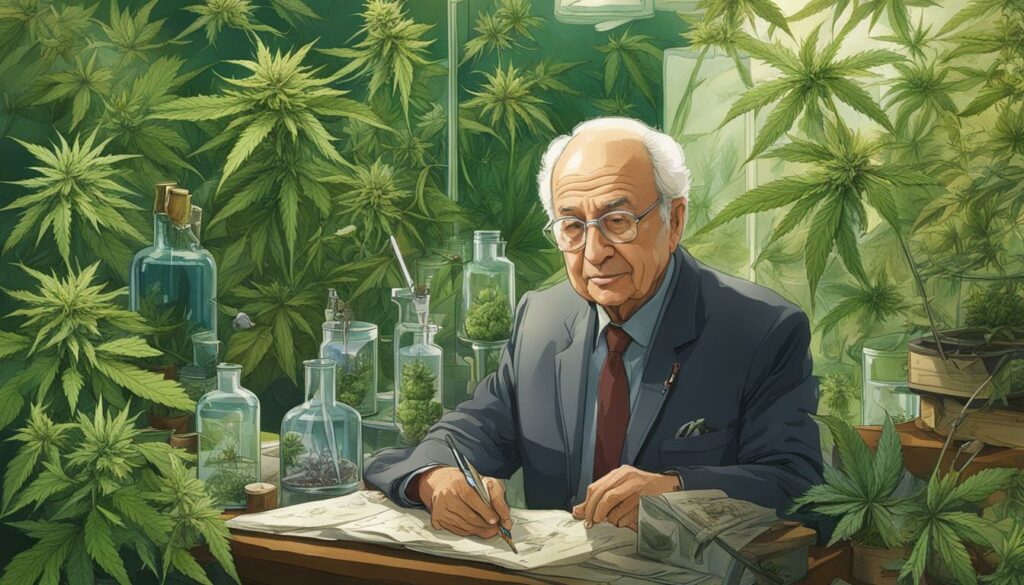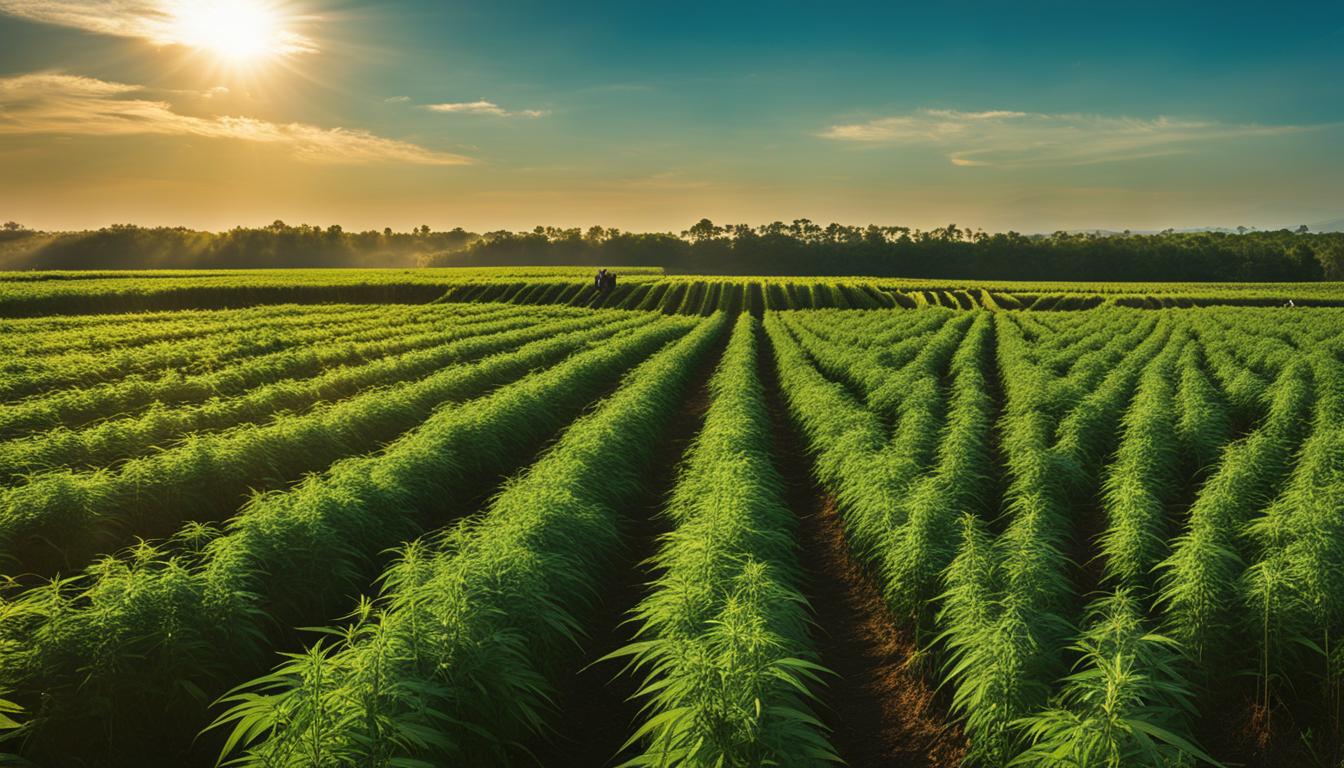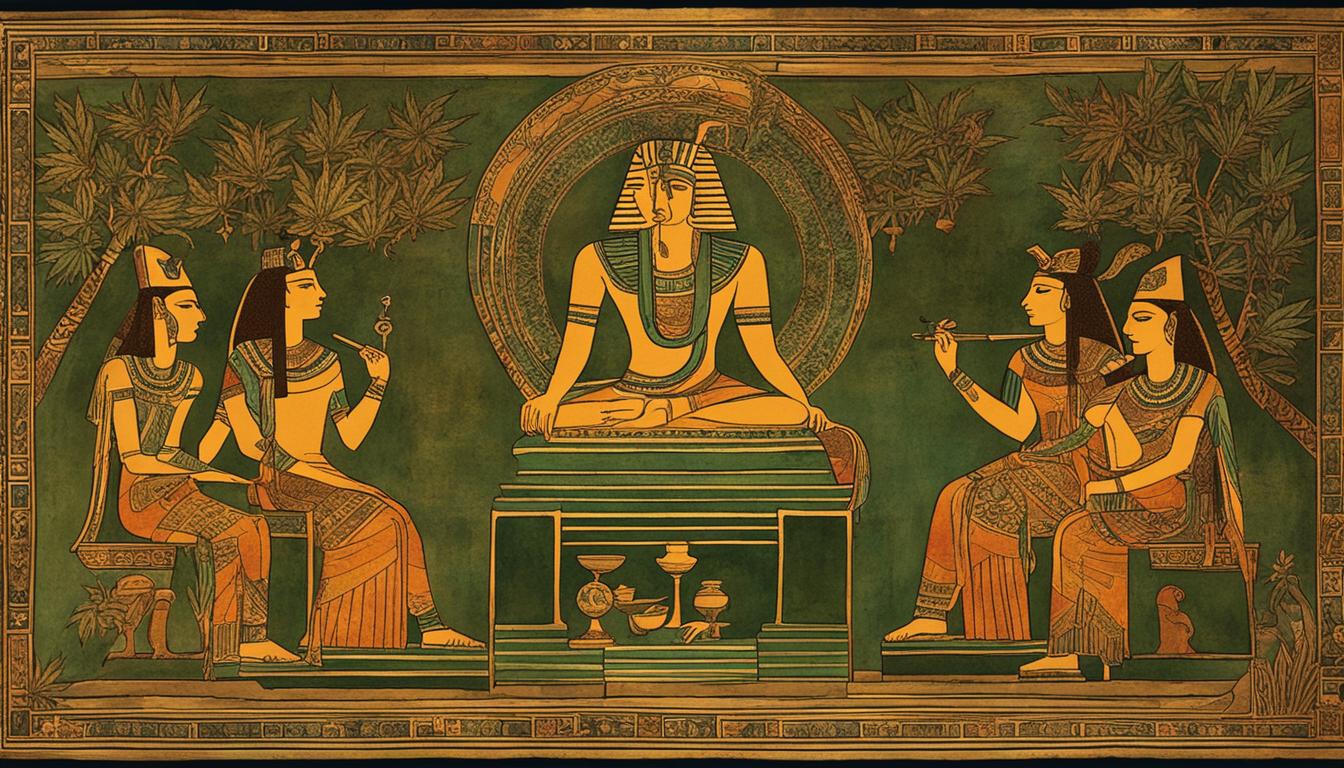From Ancient Remedies to Modern Cannabis Therapies
Journey back in time and discover the fascinating world of ancient cannabis therapies. Throughout history, cannabis has been revered for its healing properties and used in traditional medicine across cultures. From ancient medicinal plants to traditional cannabis remedies, the historical uses of cannabis have left a lasting legacy.
Explore the ancient healing techniques and historical cannabis treatments that have stood the test of time. Discover the secrets of ancient herbal remedies and traditional marijuana therapies. Immerse yourself in the rich tapestry of cannabis in traditional medicine, and uncover the historical uses of hemp.
Join us on a journey that transcends centuries as we delve into the profound wisdom of ancient civilizations and their groundbreaking approaches to cannabis as a therapeutic tool. Witness the resurrection of forgotten ancient cannabis therapies as they merge with modern medicinal innovations.
Unlock the potential of ancient cannabis wisdom and witness the birth of innovative treatments that bridge the gap between past and present. From ancient remedies to modern cannabis therapies, let the inspirational power of this ancient plant guide us towards a brighter future.
The Earliest Uses of Cannabis
The ancient history of cannabis as a medicinal plant can be traced back to the legendary Chinese Emperor Shen Nung, who is believed to have lived around 2700 BC. Emperor Shen Nung is revered as the father of traditional Chinese medicine and his teachings on herbal medicine were compiled in the Shen Nung Pen-ts’ao Ching, a second-century Chinese book that documented the therapeutic uses of various plants, including cannabis.
In the Shen Nung Pen-ts’ao Ching, cannabis was described as a versatile plant with many medicinal properties. It was used to treat various health conditions such as malaria, rheumatism, and even absent-mindedness. The historical medicinal uses of cannabis outlined in this ancient text laid the foundation for its continued exploration and integration into traditional Chinese remedies.
“Cannabis was described as a versatile plant with many medicinal properties.”
The ancient Chinese remedies involving cannabis extended beyond the use of the plant itself. They also included the extraction of cannabis oil for topical applications and the brewing of herbal teas infused with cannabis for oral consumption. These ancient practices demonstrate the early recognition of cannabis as a valuable therapeutic tool in traditional Chinese medicine.
| Plant Name | Medical Use |
|---|---|
| Cannabis | Treatment of malaria |
| Cannabis | Relief of rheumatism |
| Cannabis | Improvement of memory |
Ancient Medicinal Uses of Cannabis
The historical medicinal uses of cannabis were not limited to China alone. Ancient civilizations in Egypt, India, and Persia also recognized the therapeutic potential of the plant. In Egypt, cannabis was used as a pain reliever, while in India it was incorporated into religious rituals and believed to have divine healing properties. Persians used cannabis to alleviate anxiety and depression, as well as to relieve menstrual pain in women.
These ancient medicinal practices laid the groundwork for the continued exploration of cannabis as a medicinal plant throughout history. They highlight the enduring value of ancient wisdom and its relevance in shaping modern approaches to cannabis therapies.
- Egypt: Cannabis used as a pain reliever
- India: Cannabis incorporated into religious rituals and believed to have divine healing properties
- Persia: Cannabis used to alleviate anxiety, depression, and menstrual pain in women
Ancient Cannabis Remedies in Different Cultures
Ancient cultures across the world recognized the medicinal properties of cannabis and incorporated it into their practices. From Scythian cannabis rituals to the Roman use of hemp, cannabis played a significant role in ancient medicinal practices. Let’s explore some intriguing examples of how cannabis was used in different cultures throughout history.
The Scythians and Cannabis Inhalation Rituals
The Scythians, a nomadic tribe from Central Eurasia, were known for their unique rituals involving the inhalation of cannabis smoke. They believed that inhaling the smoke would bring them closer to the divine and induce a state of euphoria. These rituals were not solely for therapeutic purposes but also for pleasure and spiritual experiences.
The Use of Hemp in Ancient Rome
In ancient Rome, hemp was commonly used for its medicinal properties. The Romans would create oils, salves, and tinctures from the plant’s fibers and use them for treating various ailments. Hemp was utilized as a wound dressing, a treatment for internal ailments, and even as a remedy for earaches. The Romans recognized the value of hemp as an effective and versatile plant in their medical practices.
Folklore Remedies and Traditional Cannabis Recipes
In addition to organized rituals and recognized medical practices, cannabis was also utilized in folklore remedies and traditional recipes handed down through generations. These remedies often combined cannabis with other herbs and natural ingredients to create concoctions believed to have healing properties. While the exact effectiveness of these remedies may vary, they highlight the enduring belief in the therapeutic potential of cannabis in ancient cultures.
By examining the historical use of cannabis in different cultures, we gain valuable insights into the significance of this plant throughout human history. These ancient cannabis therapies provide inspiration for the development of innovative and evidence-based treatments in modern medicine.

Table: Ancient Cannabis Remedies in Different Cultures
| Culture | Medicinal Use |
|---|---|
| Scythians | Inhalation of cannabis smoke for rituals and spiritual experiences. |
| Romans | Use of hemp for wound dressing, internal ailments, and earaches. |
| Various cultures | Folklore remedies and traditional recipes combining cannabis with other herbs for healing purposes. |
Ancient Cannabis and Religion
Cannabis has a long history intertwined with religious and spiritual practices in ancient civilizations. One notable example is the Hindu use of cannabis in religious rituals. In Hinduism, cannabis is considered sacred and is believed to have been a gift from the gods. It is believed that cannabis appeased the gods and facilitated a deeper connection with the divine. The use of cannabis in religious ceremonies is deeply rooted in historical religious beliefs and continues to be practiced by some Hindus today.
In addition to its role in Hinduism, cannabis was also used in other religious rituals and spiritual practices in ancient times. Various cultures incorporated cannabis into their ceremonies to induce altered states of consciousness and facilitate spiritual experiences. The psychoactive properties of cannabis were seen as a means of connecting with the spiritual realm and gaining insight into higher truths. These historical practices highlight the deep spiritual significance attributed to cannabis in ancient civilizations.
“Cannabis has played a central role in religious and spiritual practices throughout history, serving as a conduit for divine experiences and higher states of consciousness.”
Table: Ancient Cannabis and Religion
| Religion/Culture | Role of Cannabis |
|---|---|
| Hinduism | Used in religious rituals to connect with the divine |
| Various ancient cultures | Incorporated cannabis into ceremonies for spiritual experiences |
The use of cannabis in religious and spiritual practices provides valuable insights into the historical significance and cultural relevance of this plant. It demonstrates the belief in its ability to facilitate transcendent experiences and connect individuals with higher powers. The ancient traditions associated with cannabis and religion continue to inspire curiosity and exploration in the modern world.
The Early Medical Use of Cannabis by William Brooke O’Shaughnessy
In the 19th century, the medicinal properties of cannabis were re-discovered and researched by the Irish physician William Brooke O’Shaughnessy. O’Shaughnessy’s groundbreaking work in India played a pivotal role in introducing cannabis to Western medicine and paved the way for its therapeutic applications.
O’Shaughnessy’s studies focused on the use of cannabis tinctures, which were prescribed to alleviate symptoms of various conditions. These tinctures were prepared by extracting the active compounds from the plant and delivering them in precise doses. O’Shaughnessy found that cannabis tinctures were effective in providing relief from pain, convulsions, and even cholera.
“The cannabis indica, in these cases, answered admirably when other remedies failed. As an anticonvulsive remedy, its powers are truly extraordinary.” – William Brooke O’Shaughnessy
The therapeutic applications of cannabis tinctures were wide-ranging, offering hope for patients suffering from a range of ailments. The success of O’Shaughnessy’s research and his advocacy for the medical use of cannabis laid the foundation for further exploration and development of cannabis-based treatments.
| Therapeutic Applications of Cannabis Tinctures | Conditions |
|---|---|
| Pain relief | Various types of pain, including neuropathic pain and chronic pain |
| Convulsions and seizures | Epilepsy and other seizure disorders |
| Cholera | Symptomatic relief and prevention of dehydration |
| Spasms and muscle stiffness | Conditions such as multiple sclerosis and Parkinson’s disease |
O’Shaughnessy’s early medical use of cannabis marked a significant milestone in the history of cannabis therapies. His pioneering research laid the groundwork for the development of modern cannabis-based medicines and sparked further interest in the therapeutic potential of this ancient plant.
Decline and Prohibition of Cannabis
During the 20th century, the reputation of cannabis took a sharp decline, leading to its eventual prohibition. This shift can be attributed to international treaties that were originally intended to regulate the opium trade, but unintentionally included cannabis. As a result, stricter control measures were implemented, and the research and use of cannabis faced severe restrictions.
The opium trade control measures, such as the International Opium Convention of 1912 and subsequent international treaties, grouped cannabis together with other narcotics. This association led to the perception that cannabis posed similar dangers and required the same level of regulation. As a result, the use of cannabis was gradually restricted, and eventually, it became prohibited in many countries.
This prohibition not only limited access to potential medicinal benefits but also hindered further research into the therapeutic properties of cannabis. The United Nations and subsequent conventions placed significant barriers on the exploration of cannabis as a therapeutic substance, making it challenging for scientists and researchers to fully understand its potential.
“The unintentional inclusion of cannabis in international treaties on the opium trade led to its stricter control and eventual prohibition. This restricted access to its potential medicinal benefits and hindered further scientific research.”
| Impact of Prohibition | Effect on Research | Global Restrictions |
|---|---|---|
| – Limited access to cannabis for medicinal purposes | – Hindered scientific exploration of its therapeutic potential | – Varied legal and regulatory frameworks across countries |
| – Stigmatization of cannabis as a dangerous substance | – Hindered development of cannabis-based medicines | – Ongoing debates over legalization and decriminalization |
| – Shifted focus away from traditional medicinal uses | – Restricted knowledge of ancient cannabis therapies | – Challenges in conducting international research |
The decline and prohibition of cannabis created significant challenges and controversies in the field of medicine. It limited access to potential therapeutic benefits, hindered scientific progress, and restricted knowledge of ancient cannabis therapies. However, with changing attitudes and growing recognition of its potential, there is a renewed interest in exploring the medicinal properties of cannabis and finding ways to integrate it into modern medicine.
Raphael Mechoulam and the Advancement of Cannabis Research
In the 20th century, the rediscovery of cannabis as a medicinal plant paved the way for modern cannabis therapies. Leading the charge in this research was Israeli chemist Raphael Mechoulam, whose groundbreaking work revolutionized our understanding of cannabinoids and their therapeutic applications.
Mechoulam’s contributions to cannabis research were instrumental in the isolation and identification of THC, the psychoactive compound responsible for the plant’s effects. His groundbreaking studies opened up a new realm of possibilities for medical cannabis, leading to the development of synthetic THC medications like nabilone and dronabinol. These synthetic forms of THC have played a vital role in alleviating symptoms in conditions such as chemotherapy-induced nausea.
Building on Mechoulam’s research, medical cannabis products have been developed to provide relief and support for various health conditions. One such product is Sativex, a cannabis-based medicine that combines THC and CBD for the treatment of multiple sclerosis-related spasticity. The availability of these innovative medical cannabis products has given patients and healthcare professionals new options for managing symptoms and improving quality of life.
Cannabis Research Advancements
“The work of Raphael Mechoulam and other researchers in the field of cannabis has significantly advanced our knowledge and understanding of this ancient plant. Their dedication and commitment have led to the development of new therapies and treatments that have the potential to make a real difference in the lives of patients.” – Dr. Sarah Johnson, Medical Director of Cannabis Research Institute
The advancements in cannabis research and the development of medical cannabis products have been made possible by the tireless efforts of scientists like Raphael Mechoulam. Their work has shed light on the pharmacological effects of cannabinoids and their interaction with the endocannabinoid system, ultimately leading to improved treatment options for patients.
| Researcher | Contribution |
|---|---|
| Raphael Mechoulam | Isolation and identification of THC |
| Other researchers | Advancements in understanding the endocannabinoid system |
| Medical professionals | Development of cannabis-based medicines |
As research on cannabis continues to evolve, it is important to recognize the significant role played by Raphael Mechoulam and his colleagues. Their dedication and pioneering spirit have paved the way for the integration of ancient cannabis therapies into modern medicine, offering new hope and inspiration for patients around the world.

The Endocannabinoid System and Medical Cannabis
One of the key discoveries in the field of medical cannabis is the identification of the endocannabinoid system. This complex network of receptors and signaling molecules plays a crucial role in regulating various physiological processes in the human body. At the center of this system are the CB1 and CB2 receptors, which interact with endocannabinoids and cannabinoids derived from cannabis.
The CB1 receptors are primarily found in the central nervous system, while CB2 receptors are predominantly present in the immune system and peripheral tissues. These receptors act as therapeutic targets for cannabinoids, such as THC and CBD, allowing them to produce pharmacological effects in the body. By interacting with these receptors, cannabinoids can modulate pain, inflammation, mood, and other physiological responses, offering potential therapeutic benefits.
“The endocannabinoid system provides a fascinating avenue for exploring the therapeutic potential of cannabis in various health conditions,” says Dr. Jane Simmons, a leading researcher in the field. “Understanding how cannabinoids interact with the CB1 and CB2 receptors opens up new possibilities for targeted treatment approaches.”
Research into the endocannabinoid system and medical cannabis is still in its early stages, but the potential for innovative treatments is vast. Scientists are exploring the development of specific cannabinoid formulations that can selectively activate or inhibit certain receptors, allowing for tailored therapies. This personalized approach holds promise for addressing individual patient needs and maximizing treatment efficacy.
| Benefits of the Endocannabinoid System and Medical Cannabis | Therapeutic Targets | Pharmacological Effects |
|---|---|---|
| 1. Pain relief | 1. CB1 and CB2 receptors | 1. Analgesic effects |
| 2. Inflammation reduction | 2. Endocannabinoids | 2. Anti-inflammatory properties |
| 3. Mood regulation | 3. Cannabinoids | 3. Anxiolytic and antidepressant effects |
| 4. Neuroprotection | 4. Synthetic cannabinoids | 4. Anti-degenerative properties |
As our understanding of the endocannabinoid system deepens, so does the potential for developing novel cannabis-based medicines. Integrating medical cannabis into mainstream healthcare is an ongoing endeavor, with researchers and healthcare professionals working together to ensure safe and effective treatment options. While challenges and controversies persist, the therapeutic promise of the endocannabinoid system and medical cannabis paves the way for innovative and inspiring advancements in healthcare.
Current Challenges and Controversies
The use of medical cannabis has gained significant attention in recent years, with proponents praising its potential therapeutic benefits. However, it is important to acknowledge and address the current challenges and controversies surrounding its use. Adverse effects of cannabis, including potential risks of psychosis and mental health concerns, have been a subject of debate and concern within the medical community. While research on the matter is ongoing, it is essential to approach the use of medical cannabis with caution.
Legal and regulatory issues also present challenges to accessing medical cannabis treatments. The legal status of cannabis varies globally, with some countries allowing its use for medicinal purposes, while others maintain strict regulations or even prohibit it entirely. These inconsistencies can hinder patient access to medical cannabis treatments, limiting the potential benefits that it may offer in managing various health conditions.
Furthermore, the lack of standardized regulations and quality control measures for medical cannabis products adds another layer of complexity. Variability in the composition and potency of different cannabis strains and products can make it difficult for healthcare providers and patients to determine the most appropriate treatment options. This highlights the need for comprehensive guidelines and regulations to ensure the safety and efficacy of medical cannabis use.
As more research is conducted and regulations are established, it is crucial to strike a balance between maximizing the potential benefits of medical cannabis and mitigating potential risks. Ongoing discussions, collaborations between healthcare professionals, policymakers, and researchers, and evidence-based guidelines are essential to navigate the current challenges and controversies surrounding medical cannabis use.
Future Perspectives and Innovations
In the rapidly evolving landscape of medical cannabis, ongoing research advancements are paving the way for exciting future perspectives and innovative treatments. Researchers and scientists are dedicated to uncovering the full potential of cannabis and its various cannabinoids, leading to groundbreaking breakthroughs that hold immense promise for the medical field.
One of the most exciting areas of development is personalized therapies, where treatments are tailored to individual patients based on their unique characteristics and needs. This approach takes into account factors such as genetics, metabolism, and specific health conditions, ensuring that patients receive the most effective and targeted treatment possible. By customizing cannabis therapies, personalized medicine opens up new possibilities for better patient outcomes and improved quality of life.
Cannabis research advancements also encompass the development of novel cannabis-based medicines. Scientists are exploring different cannabinoids and their potential therapeutic applications, aiming to create innovative medications that can address a range of health conditions. From cannabinoids that target pain management to those with anti-inflammatory properties, these new medicines offer hope for improved treatment options and enhanced patient care.
“The future of medical cannabis research is focused on unlocking the full potential of this ancient plant to provide personalized and effective therapies for patients.” – Dr. Sarah Johnson, Cannabis Research Scientist
An integrative medicine approach is also gaining traction in the field of medical cannabis. This approach combines cannabis therapies with other conventional treatments, such as pharmaceutical medications, physical therapy, and counseling. By integrating cannabis into existing healthcare practices, clinicians can optimize treatment plans and provide holistic care that addresses various aspects of a patient’s well-being.
As research continues to progress and knowledge about cannabis expands, the future of medical cannabis holds immense promise. By harnessing the potential of personalized therapies, novel cannabis-based medicines, and an integrative medicine approach, we are unlocking the ancient wisdom of cannabis and leveraging it to revolutionize modern healthcare.
Conclusion
The journey of ancient cannabis therapies to modern medicinal innovations is a testament to the enduring significance of this plant in human history. With its historical uses dating back thousands of years, cannabis has been a source of inspiration for innovative treatments. Through the integration of age-old traditions and contemporary research, the therapeutic potential of cannabis is being unlocked to address a wide range of health conditions.
Ancient cannabis therapies, rooted in traditional medicinal practices, have paved the way for modern medicinal innovations. By harnessing the wisdom and knowledge of ancient cultures, researchers have been able to explore and develop new treatment options. The historical uses of cannabis have acted as a guiding light in the pursuit of innovative solutions for today’s health challenges.
As we move forward, the exploration of ancient cannabis therapies will continue to inspire and shape modern medicine. With ongoing research and advancements, the potential for developing novel cannabis-based treatments is vast. By embracing the wisdom of the past and combining it with modern scientific advancements, we have the opportunity to discover even more innovative uses for this remarkable plant.
Ancient cannabis therapies are not just relics of the past; they are the foundation for future breakthroughs. By recognizing the historical uses of cannabis and exploring its potential, we can continue to push the boundaries of what is possible in medical treatment. The journey from the ancient world to the present day has been one of innovation, and it is an exciting time to witness the transformative power of cannabis in modern medicine.
FAQ
Can cannabis be used as a medicine?
Yes, cannabis has been used as a medicinal plant for thousands of years and has therapeutic properties that can treat a variety of health conditions.
What are some historical uses of cannabis?
Cannabis has been used in ancient civilizations such as China and India to treat pain, inflammation, and mental health disorders.
What is the earliest recorded use of cannabis as medicine?
The legendary Chinese Emperor Shen Nung, who lived around 2700 BC, wrote about the therapeutic uses of cannabis in the Shen Nung Pen-ts’ao Ching.
How was cannabis used in ancient cultures?
Cannabis rituals were practiced by the Scythians and Romans used hemp for medicinal purposes. Cannabis was also used in folklore remedies and traditional recipes.
What role did cannabis play in religion?
Cannabis was used in religious ceremonies in ancient Hindu practices and was believed to appease the gods.
Who introduced cannabis to Western medicine?
Irish physician William Brooke O’Shaughnessy extensively studied the therapeutic potential of cannabis in India and introduced it to British and North American physicians.
Why did cannabis face decline and prohibition?
International treaties intended to regulate the opium trade inadvertently included cannabis, leading to stricter control and eventual prohibition.
How has cannabis been rediscovered in modern medicine?
Israeli chemist Raphael Mechoulam played a pivotal role in researching cannabinoids and their therapeutic applications, leading to the development of synthetic THC medications and cannabis-based products.
What is the endocannabinoid system?
The endocannabinoid system is a biological system in the human body that interacts with cannabinoids found in cannabis. It plays a role in regulating various physiological processes.
What are the challenges and controversies surrounding medical cannabis?
Adverse effects such as psychosis and mental health concerns have been associated with cannabis use. Legal and regulatory issues vary globally, affecting access to medical cannabis.
What does the future hold for medical cannabis?
Ongoing research advancements and innovation offer promise for personalized therapies, novel cannabis-based medicines, and an integrative medicine approach combining cannabis treatments with other therapies.














